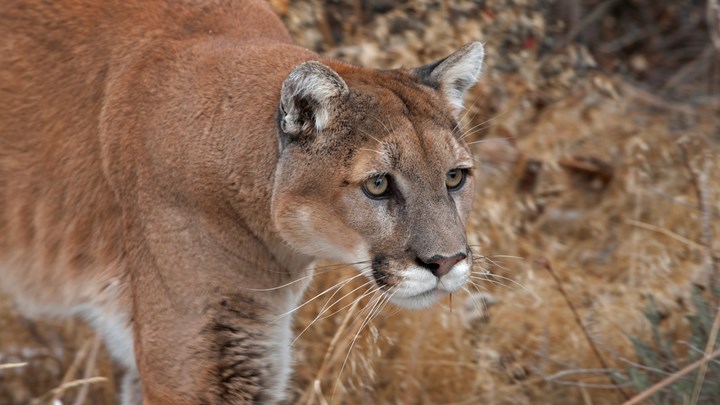
by Mark Chesnut - Monday, October 21, 2024

We recently reported that Colorado voters will find a question on their Nov. 5 ballot concerning outlawing the hunting of mountain lions, bobcats and the already federally protected Canadian lynx.
As shared by this website’s editor in chief, the proposed ban, known as Initiative 91, comes in spite of the fact Colorado Parks and Wildlife’s (CPW) professional wildlife managers report that the state’s mountain lion populations are increasing and that bobcat numbers in some areas are also on the rise. It also comes amid increasing reports of mountain lions invading urban and suburban areas of the state—a fact anti-hunters also choose to ignore. With the election now two weeks away, things are heating up as we NRA members and hunters prepare to head for the polls, with interested parties on both sides of the issue speaking out.
On the “no cat hunting ban” side are those who believe wildlife populations should be managed by professional biologists who have their finger on the pulse of big cat populations, not by voters who are untrained in wildlife biology.
In step with this NRA Hunters’ Leadership Forum website, hunter, outdoor writer and TV producer Chris Dorsey recently penned a piece in Forbes warning voters against supporting the ballot question.
“The cat population boom has greatly impacted elk and deer herds that draw 350,000 hunters each year who contribute nearly $2 billion to the state’s economy,” Dorsey wrote. “State biologists estimate that Colorado mountain lions kill nearly 230,000 mule deer each year—more than half the state’s entire population.”
Among those encouraging a “yes” vote on the proposed hunting ban is Dan Ashe, former U.S. Fish and Wildlife director during the Obama administration. Ashe recently wrote a widely distributed op-ed calling for citizens to approve the ban.
“… hunters are predators, and as a community, we have long harbored a bloodlust for competitors, like mountain lions,” Ashe wrote. “We have contributed to societal mythologies and fears, and despite the wisdom of mid-1900s conservation scholars like Aldo Leopold, we have continued to scapegoat and brutalize these creatures in the name of game management.”
It’s hard to understand why a career wildlife conservation professional would side with emotion over science, but as groups such as the NRA have tracked, Ashe has a history of siding with anti-hunting extremists. For just one example, readers of this NRA website will recall Ashe’s final blow to sportsmen and women on his last day in office in 2017 when he signed an order phasing out the use of all lead ammunition and fishing tackle on national wildlife refuges by 2022. Standing with hunters and shooters, the NRA Institute for Legislative Action (NRA-ILA) called the ban “a reckless, unilateral overreach.” Backed by the NRA and other hunter-conservationist groups, the Trump administration’s Secretary of Interior Ryan Zinke overturned the rule on his first day in office later that month.
Those who favor science-based wildlife management for predator and prey species alike as a vital tool in maintaining America’s wildlife populations might recall an eye-opening article on this site from 2023 tracking how lions currently are putting increasing pressure on prey species such as deer. That report shared the results of a 2021 CPW collared-lion study documenting that mule deer make up a staggering 66 percent of lion kills, with half of the deer killed being fawns.
The proposed ballot initiative comes after proponents of a ban were unable to get a law outlawing cat hunting passed by the state legislature. In February 2022, Colorado’s SB22-031 sought to prohibit the hunting, trapping or otherwise taking of a bobcat, lynx or mountain lion except under very specific circumstances. But a legislative committee killed the measure by a 4-to-1 vote.
“Historically, measures like these are drafted based on emotions without taking any environmental or biological data into consideration,” NRA-ILA wrote at the time. “Hunting is not only one of America’s oldest traditions, but is also the best way to manage natural resources and predator populations. Further, these conservation efforts are undertaken through scientific study of wildlife populations to ensure a healthy environment is maintained.”
In the end, while wildlife management is best left up to trained experts in the field, the future of Colorado cat hunting and management will be decided by voters—ballot-box biology at its worst, discarding the important role of professional biologists and wildlife managers who understand the animals’ population dynamics and work to keep those populations healthy.
About the Author
Freelance writer and editor Mark Chesnut is the owner/editorial director at Red Setter Communications LLC in Jenks, Okla. An avid hunter, shooter and field-trialer, he has been covering Second Amendment issues and politics on a near-daily basis for over 25 years.
E-mail your comments/questions about this site to:
[email protected]
Proudly supported by The NRA Foundation and Friends of NRA fundraising.
